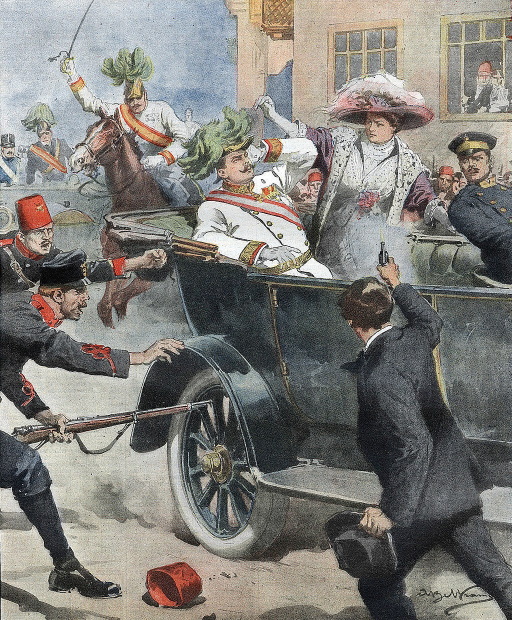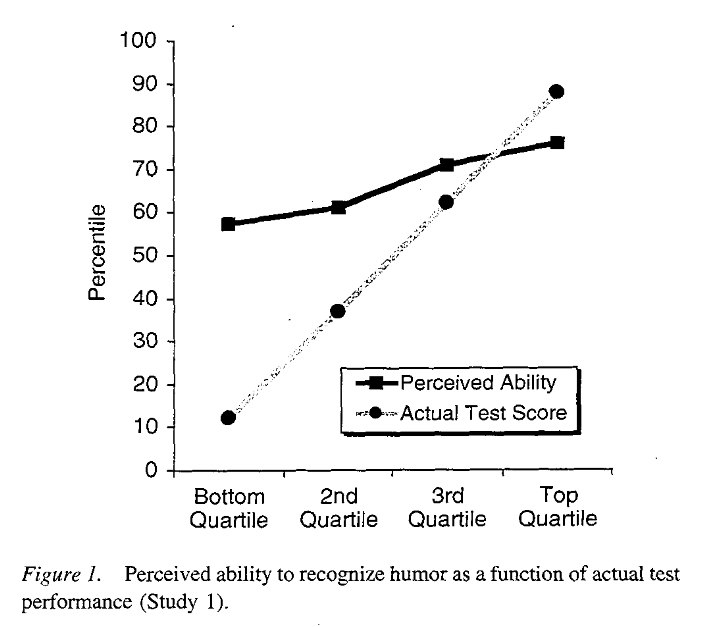And the more the world changes, the more it stays the same. Only the price of the newspaper changed in 83 years.

And the more the world changes, the more it stays the same. Only the price of the newspaper changed in 83 years.

This photo of a WWI/WWII memorial in Vácrátót, Hungary, just appeared in my feed moments ago in a group dedicated to historic photographs.

Yet it reminds me not of the past but the present: the observation that almost all the refugees streaming from Ukraine to Europe are women and children, as men stay behind to fight.
Please say no to war.

This piece of news caught my attention a couple of weeks ago, before Tsar, pardon me, benevolent humble president Putin launched the opening salvo of what may yet prove to be WWIII and the end of civilization. Still, I think it offers insight into just how sick (and, by implication, how bloody dangerous) his regime really is.
We all agree that planning to blow up a major institution, even if it is a much disliked spy agency, is not a good idea. But this is what the evil extremist, hardliner Nikita Uvarov was trying to do when he was getting ready to blow up the headquarters of Russia’s FSB, its federal security service.
Oh wait… did I mention that Mr. Uvarov was 14 at the time, and the FSB building he was planning to demolish was, in fact, a virtual version that he himself and his buddies constructed in the online computer game Minecraft?
It didn’t deter Mother Russia’s fearless prosecutors, intent on restoring law and order and maintaining the security of the Russian state. A couple of weeks ago, Mr. Uvarov was sentenced, by a military court no less, to serve five years in a penal colony.
These words, uttered by Putin, are the words of a madman:
Whoever tries to interfere with us, and even more so to create threats to our country, to our people, should know that Russia’s response will be immediate and will lead you to such consequences as you have never experienced in your history. We are ready for any development of events. All necessary decisions in this regard have been made. I hope that I will be heard.
Enjoy these good days with warmth, food security, functioning Internet and a working infrastructure. They may not last much longer, no matter where you live in the world. And when the nukes come, thank Putin.


War. War never changes.
The other day, someone sent me a link to a recent paper on arxiv.org:
Be careful. You never know when a rogue penguin might be targeting you.
This is the last moment until well into the 22nd century that the current time and date in UTC can be expressed using only two digits.
I can only hope that this date will not be memorable for another reason, you know, something like the start of WW3?
There is an imminent possibility that Russia, a fossilized, sick regime, might attack Ukraine. The supposed reason? Ukraine is seen as a persistent national security threat bordering Russia.
There is a sobering historical parallel. A little over a century ago, another “sick man of Europe,” the Austro-Hungarian Monarchy, faced a similar perceived threat by a much smaller nation bordering their empire, Serbia. After the assassination of the Crown Prince, Franz Ferdinand, by a Serbian nationalist who was supposedly supported by the Serbian state, the Monarchy decided to act. Committed to Serbia’s defense, Russia entered the war; committed to their allies, but also fearing an emerging Russia, Imperial Germany soon followed suit. And as they say, the rest is history.

But what history books don’t often detail is what happened to the Monarchy’s armies in Serbia. Surely, the great armies of a major European power just crushed the defenses of a much smaller, less well-developed neighbor?
Er… not exactly. First, in August 1914, Serbian forces won the first Allied victory, when they pushed back the armies of the Monarchy in northwestern Serbia. Later that year, in December, the Serbian army launched a successful counteroffensive and pushed the troops of the Monarchy out of Serbia.
In other words: with sufficient material help from France and Russia, plus support on the diplomatic front, Serbia could have bloodied the nose of the Monarchy and won the war, without Russia or Germany (or France, or Britain) ever entering into the conflict. The Great War, arguably, was both avoidable and in the end, completely unnecessary.
I wonder what things will be like in the Ukraine. Should Russia attack, will other powers enter the conflict, risking a wider war, perhaps a world war? And if they do so… will it be just as unnecessary as it was in the case of Serbia a century ago?
I hope we won’t get a chance to find out. Meanwhile, I cannot help but wonder what Europe would be like had events in 1914 unfolded without the Great Powers entering the fray. An embarrassing military fiasco in Serbia might have done to the Monarchy what the Falklands war did to Argentina, ending authoritarianism, forcing the Habsburgs, if not to abdicate, then to enact reforms that would have transformed Austria-Hungary into a modern, constitutional monarchy. Similar developments might have taken place in Russia and Germany, following the British model, and avoiding bloody communist revolutions. Just imagine a united Europe emerge by the 1920s, 1930s, without the rise of fascism, Nazism, Bolshevism, without the devastation of two world wars?
Instead, 1914 ended a golden era.
PS: I wrote much of the above last night, less than 24 hours ago, but before Russia’s announcement that they now recognize the “independence” of two regions of Ukraine that their irregular troops “liberated” a few years back, and before they announced that they will send “peacekeepers” there. History, here we come…
Engineers sometimes have to deal with unexpected challenges. This is especially true for systems that have to operate in a natural environment, subject to the elements, unpredictable weather, and, well, wildlife.
Take these beautiful Starlink satellite dishes. Little technological marvels that bring Internet service to rural users through Musk’s Starlink satellite constellation. Key to the system is a steerable small satellite dish that can be set up, e.g., in the backyard of the Starlink customer.
Unfortunately electronics ultimately converts electrical energy into waste heat, and the Starlink dish is no exception. The dish actually has a “snow melt” mode that is supposed to keep it free of snow and ice for uninterrupted operation. And it certainly has a comfy shape… especially when you are a feral cat in the middle of winter.
I doubt this issue was ever considered by Starlink engineers who designed the customer equipment. On the other hand, I would not be surprised if, in the future, engineering courses end up using this as an example of the unexpected, facing engineers.
Recently, I came across an interesting article by a Jonathan Jarry from McGill University, suggesting that the much heralded Dunning-Kruger effect is not real, but a data analysis artifact.
Here is the famous Dunning-Kruger graph:

The usual interpretation is that those in the bottom quartile significantly overestimated their ability. This is the famous Dunning-Kruger effect.
But, Jarry says, a completely random model yields a very similar-looking graph:
 and thus concludes that the Dunning-Kruger effect may not be real after all.
and thus concludes that the Dunning-Kruger effect may not be real after all.
But wait. When we compare the two graphs, there are qualitative similarities but also striking differences. Notice how, in the second graph, the two curves intersect each other at roughly the halfway point. That makes perfectly good sense: If the model is that people in all four quartiles fail to assess their abilities accurately at the same rate, those in the bottom quartile will overestimate their ability just as much as those in the top quartile underestimate theirs. This would be the effect of random noise.
However, when we look at the original Dunning-Kruger curve, this is not what we see. Those in the bottom quartile overestimate their ability to a much greater extent than those in the top quartile underestimate theirs. Even in the 3rd quartile, people tended to overestimate their abilities, though only slightly, by the same amount as those in the top quartile underestimated theirs. So what the original Dunning-Kruger curve actually appears to show is a more ore less random spread in the 3rd and top quartiles, but significant bias in the bottom and 2nd quartiles, consistent with the notion that people in these quartiles overestimate their abilities.
Of course it would be nice to see a proper statistical analysis that also evaluates the statistical significance of the finding, but a simple, qualitative comparison of the two plots seems to show is that the Dunning-Kruger effect is real, after all.
I first heard about it from a friend, though he didn’t call it by this name.
It was a few days ago. Another convoy of trucks was approaching downtown Ottawa, to join their freedom-loving brethren to promote their message of love, peace, and, ahem, “fuck Trudeau”, “Trump 2024”, “Make America Canada Great Again” and other wonderfully delightful things representing our shared Canadian values.
But some evil, selfish Ottawa citizens, like my friend, had enough. Enough of the noise, the disruption, the lawlessness, the mob rule. And since the police were nowhere to be found, they took matters into their own hands.
Quite simply, they blocked the convoy’s path. They did exactly what free citizens are supposed to do when their community is threatened by a lawless mob: they defended it. The convoy turned back. And this event now has a name: The Battle of Billings Bridge.
Thank you, neighbors. And finally, a few days later (and arguably, three weeks late) our police are doing what they are supposed to do, and by all indication, they are doing a good job. Of course there are the inevitable cries, complaints about the abuse of power, the end of democracy, the tyranny of Trudeau. Never mind that it’s our city police (of course with help from other police agencies) and they are not doing it for Trudeau. They are doing it for us, citizens of Ottawa. To help us get our city back.

No, I do not enjoy the thought of a city under lockdown, with checkpoints all over downtown. And once the thugs with their weaponized transport trucks are gone, I hope our city will come back to normal, and that the lessons learned will not include turning Wellington Street into a copy of Pennsylvania Avenue, blocked from traffic with permanent concrete barriers, with ever present police armed with military gear. This spring, I hope I’ll be able to walk on Parliament Hill again, a free citizen, not prevented by the authorities but also not intimidated by thuggish occupiers and their vehicles.
In the first season of Amazon’s political thriller series Jack Ryan, a terrorist cell releases poison gas in a crowded church after chaining the doors on the outside, to ensure that the victims are locked in and suffocate.
Amidst all the news unfolding in our fine city, it escaped my attention that something similar almost took place two weeks ago on Lisgar street in the downtown core: two criminals, apparently associated with the “freedom convoy”, attempted to set the lobby of an apartment building on fire while taping its front door shut on the outside.
In case anyone wonders what grants us the right to ask our police force to defend our city from those who occupied its downtown core for more than three weeks, this is your answer.
Had this attempt succeeded, it might have entered the history books as one of the worst incidents of terrorism in the history of Canada. Thankfully, the door was freed up and the fire was extinguished by a good Samaritan. The police are still looking for the perpetrators.
The 64-antenna radio telescope complex, MeerKAT, is South Africa’s contribution to the Square Kilometer Array, an international project under development to create an unprecedented radio astronomy facility.
While the SKA project is still in its infancy, MeerKAT is fully functional, and it just delivered the most detailed, most astonishing images yet of the central region of our own Milky Way. Here is, for instance, an image of the Sagittarius A region that also hosts the Milky Way’s supermassive black hole, Sgr A*:
The filamentary structure that is seen in this image is apparently poorly understood. As for the scale of this image, notice that it is marked in arc seconds; at the estimated distance to Sgr A, one arc second translates into roughly 1/8th of a light year, so the image presented here is roughly a 15 by 15 light year area.
Protesters here in Ottawa claim that the public supports them, but surveys say otherwise. In fact, apparently some two thirds of Canadians support the use of the military to end the illegal occupations.
I am fed up to my eyeballs with these insurgents, these seditionists who think mob rule is the way to resolve what could be a rational discussion about the value and validity of certain pandemic measures. (Of course we all know that it’s not about the mandates, it never was. The protesters might think that they are here on account of the mandates but in reality, they are just pawns, the forces behind them are much more sinister.)
But using the military? Talk about turning the propaganda into a self-fulfilling prophecy. The protesters may think of themselves as peaceful, perhaps even law-abiding, but the forces behind them actually covet violence: To them, success is measured by the number of dead cops and dead protesters that will be left on Wellington Street.
Which is why I sincerely hope that the military stays put in their barracks, and once this madness is resolved, the only thing that will need to be cleaned up on Wellington Street will be some litter and debris, and perhaps some doggie poo.
Some random thoughts concerning this siege and occupation by an astroturfed movement.
Some of the occupiers holding our city hostage are demanding an end to the “unscientific” mask and vaccine mandates.
I was wondering how to react, but then I came across this New Yorker cartoon. It. Just. Nails. It.
Here is a quote from an internal e-mail, obtained by The Globe and Mail, that interim Conservative leader Candice Bergen authored:
“I don’t think we should be asking them to go home […] I understand the mood may shift soon. So we need to turn this into the PM’s problem.”

The evil cynicism is palpable. As is her complete disregard, contempt even, for the well-being of us, residents of Ottawa.
There was a time when I considered myself a supporter of the Conservative party. I even voted for Kim Campbell in the first Canadian election in which I could participate as a newly minted citizen.
But this sick joke of a party? I’d sooner vote for a rabid toad as prime minister than these shameless, power-hungry sociopaths.
I am restraining myself as I do not wish to contribute to the hate and division that is plaguing our societies. I keep many of my thoughts and suspicions on this topic to myself.
But I still can’t not comment on this “freedom” convoy that is coming to mess up our lives here in Ottawa this weekend.

Freedom to do what? Let me tell you:
Presenting this as “freedom” offends me deeply, as I personally experienced not being free, having grown up in a communist dictatorship. What is evident to me is that you don’t know what it is like to be deprived of freedom. This is why you cannot tell the difference between a true desire to be free as opposed to just blind, unconstrained selfishness and egotism, the freedom to do whatever the heck you want with no regard to any consequences that might impact the lives of others.